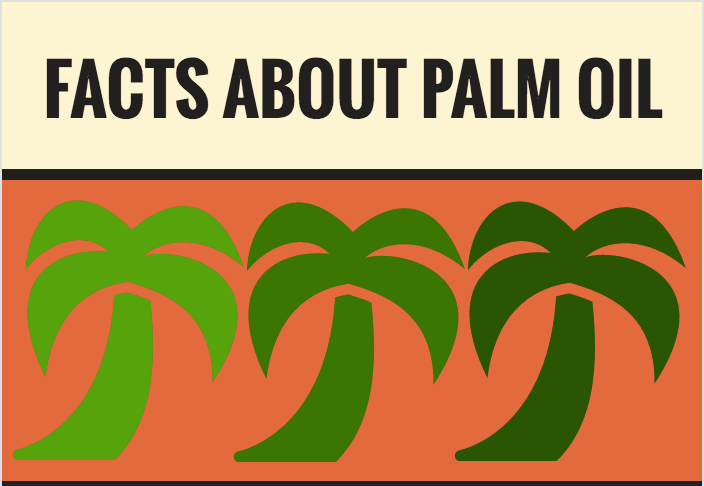Why do we like to cook and eat instant noodles? It is tastily unhealthy and we love it. It’s inexpensive and the handiest of all types of staple food; we can put it in our cupboard for a long period of time without it going bad! All-in-all, it only takes 3 minutes to cook it. You may have heard how eating instant noodles is bad for you, but you may not know how terrible it actually is to your body, and even more disastrous as the health of our Earth.
The ingredients of instant noodles are:
- Wheat flour
- Palm Oil
- Salt
- MSG
- Preservatives (that’s why they have such a long shelf-life – called TBHQ
– a by-product of petroleum which is carcinogenic if consumed in large amounts) - Other substances that cause the risk of metabolic syndrome of adults, in particular women, to increase.
Palm Oil is a type of vegetable oil. The instant noodles are fried in palm oil, so much that average pack of instant noodles are 20% palm oil by weight; all are saturated fat.
A brief overview about palm oil production:
A hectare of palm oil plantation yields on average 4 tonnes of crude palm oil per year. In 2013 alone, 59.6 million tonnes of palm oil was consumed; meaning more than 13 million of hectares of palm oil plantation were needed to fulfill the high consumption.
Imagine the speed of deforestation: Every 10 minutes, 5 football pitches of rainforest area are being deforested.
Developing countries in particular Indonesia and Malaysia (who make 85% of palm oil production) are clear-cutting or burning their own natural rainforests in order to plant more palm oil plantations to meet the high demand of this biofuel. Meanwhile, biodiversity decreases rapidly and animals e.g. orangutans are becoming endangered.




The pure production of palm oil plantation had been causing farmers to exploit our rainforests and heavy deforestation.

Orangutans are soon-to-be endangered due to their loss of habitat in the tropical rainforest.
Not only the carbon sinks are being destroyed, the plant-burning action of deforestation causes a lot of carbon dioxide, in addition to the CO2 emissions during the transformation of the crude palm oil into processed palm oil, further using these oil to cook and fry instant noodles. Check out in this interactive.

Previously, I had never thought just a simple thing use as eating instant noodles or cup ramen took so much processing as well as produce heavy duty wastage. On average taken from the past 10 years, 100 billion servings of instant noodles are being consumed annually worldwide (check out the instant noodles consumption of your country from instantnoodles.org). This means that 100 billion instant noodles packaging are sent into the dumps annually. Most cup noodles packaging are foam cups which are non-biodegradable (will stay on Earth forever), made with non-renewable resources (fossil fuels) and also produces a large amount of greenhouse gases such as carbon dioxide and HFCs are accelerate global warming!
Even though some companies’ corporate social responsibility departments are investigating into recyclable packaging, not all countries are prone to having a good recycling culture. Hong Kong and China are particularly lax about recycling – whilst other countries such as South Korea and Taiwan, use environmental-friendly recycling strategies that force households to sort out trash before disposal.
In conclusion, think about the consequences of the cup noodle in your house before using 3 minutes to eat it.
- The palm oil had went on to heavily disadvantaged to humans and the environment at a great cost.
- Think about the efforts to fell the rainforest and process in a factory in order to produce sufficient levels of the raw material – palm oil.
- Remind yourself after eating the instant noodles, there will definitely be a lot of unhealthy chemicals inside
- The action of throwing away the package of instant noodles, whether it is from cup styrofoam ramen or the plastic bag, and where those chemicals end in the environment later on.
- What is your environmental footprint?
Whilst I appreciate many companies putting a lot of effort into R&D for environmental solutions, for example to find more sustainable ways to produce their food products, using sustainably-grown palm oil or producing recyclable packaging, before all these measures, the average consumer must learn to be AWARE of the problems with the palm oil, learn to CARE about these issues, keep up to date, and also SHARE the sustainability knowledge we know to others.
Spread the message! Let’s not be unfair to our next generation. It’s high time we start taking notice of what we are doing to our planet.
References:
Sime Darby Plantation (2014). Palm Oil Facts & Figures . Retrieved from http://www.simedarby.com/upload/Palm_Oil_Facts_and_Figures.pdf
Frazier, K. (2015). How Styrofoam is Bad for the Environment. How Styrofoam is Bad for the Environment. Retrieved from http://greenliving.lovetoknow.com/How_Styrofoam_is_Bad_for_the_Environment
Pang, H. Y., Lee, Y. W. & Lee, Y. H. (2016). The Impact of Instant Noodles on the Environment. Retrieved from http://www.step.com.sg/wp-content/uploads/2016/04/Queensway-Secondary-School-The-Impact-of-Instant-Noodles-on-the-Environment.pdf

